-
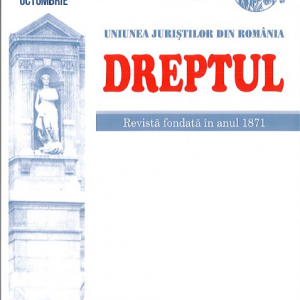 Law No 85/2006 on the procedure of insolvency was initially repealed and replaced by the Government Emergency Ordinance No 91/2013 on the procedures for preventing insolvency and of insolvency, which was in force only a few days, being declared unconstitutional, in its entirety, by the Constitutional Court of Romania. For this reason, it was necessary to adopt a new law on this matter (No 85/2014) which entered into force at the end of June 2014. In this study, the authors examine more extensively the principles of the procedure of insolvency, as well as the rights and the obligations of the participants, as currently regulated by Law No 85/2014, in comparison, when appropriate, with the previous law (Law No 85/2006).
Law No 85/2006 on the procedure of insolvency was initially repealed and replaced by the Government Emergency Ordinance No 91/2013 on the procedures for preventing insolvency and of insolvency, which was in force only a few days, being declared unconstitutional, in its entirety, by the Constitutional Court of Romania. For this reason, it was necessary to adopt a new law on this matter (No 85/2014) which entered into force at the end of June 2014. In this study, the authors examine more extensively the principles of the procedure of insolvency, as well as the rights and the obligations of the participants, as currently regulated by Law No 85/2014, in comparison, when appropriate, with the previous law (Law No 85/2006). -
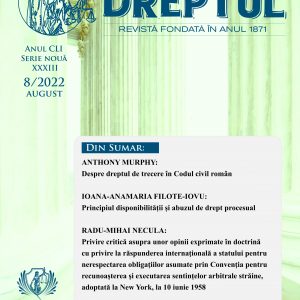 In this study, the author aims to highlight a number of manifestations of the principle of availability in civil proceedings that have been sanctioned for the abuse of procedural law. From the analysis of the judicial practice, we identify a multitude of situations in which the person’s right to file a lawsuit is exercised for purposes other than the one for which he was recognized by law, which was sanctioned by the application of a judicial fine. The right to sue and the right to appeal must be exercised in good faith, in accordance with the purpose enacted by the legal provisions, and not to pursue the production of a detrimental result to the adverse party.
In this study, the author aims to highlight a number of manifestations of the principle of availability in civil proceedings that have been sanctioned for the abuse of procedural law. From the analysis of the judicial practice, we identify a multitude of situations in which the person’s right to file a lawsuit is exercised for purposes other than the one for which he was recognized by law, which was sanctioned by the application of a judicial fine. The right to sue and the right to appeal must be exercised in good faith, in accordance with the purpose enacted by the legal provisions, and not to pursue the production of a detrimental result to the adverse party. -
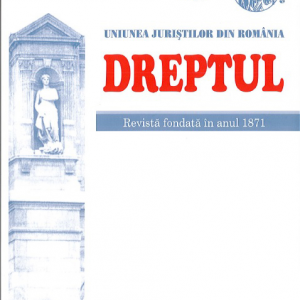 Based on art. 6 para. 1 of the (European) Convention of human rights and fundamental freedoms and art. 21 para. (3) of the Romanian Constitution (revised and republished), the author reviews numerous texts in the new (Romanian) Code of Civil Procedure (Law no. 134/2010, published in the Official Gazette of Romania, Part I, No. 485 of July 15th, 2010, yet unenforced), which implements, specifically, the principle of the right to a fair trial within optimal and predictable delay.
Based on art. 6 para. 1 of the (European) Convention of human rights and fundamental freedoms and art. 21 para. (3) of the Romanian Constitution (revised and republished), the author reviews numerous texts in the new (Romanian) Code of Civil Procedure (Law no. 134/2010, published in the Official Gazette of Romania, Part I, No. 485 of July 15th, 2010, yet unenforced), which implements, specifically, the principle of the right to a fair trial within optimal and predictable delay. -
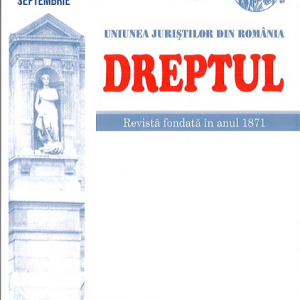 The authors look at the equipollence principle – related to the moment when the period for the enforcement of a mechanism of redress starts to run – mostly in terms of the case law. Starting from the publication, a short time ago, of the decision issued in a case by the Criminal Section of the High Court of Cassation and Justice, note is taken of the fact that the case law of the supreme judicial authority in criminal matters has varied in this respect in time, starting by the acceptance and enforcement of this principle, followed by the denial of its applicability, and then by its re-enforcement. As regards the same principle, the judicial practice of the High Court of Cassation and Justice in the civil trial-related matter is unitary and constant, meaning that the equipollence theory strictly applies to the cases expressly regulated by law, and no cases when equipollence is also applied for other assumptions as well are identified. The conclusion is that the inconsistencies between the criminal and civil trial-related matters in terms of legislative, doctrine-related and case law approach of this principle, underlined throughout the analysis, should be eliminated both by legislative amendments and by judicial practice unification mechanisms.
The authors look at the equipollence principle – related to the moment when the period for the enforcement of a mechanism of redress starts to run – mostly in terms of the case law. Starting from the publication, a short time ago, of the decision issued in a case by the Criminal Section of the High Court of Cassation and Justice, note is taken of the fact that the case law of the supreme judicial authority in criminal matters has varied in this respect in time, starting by the acceptance and enforcement of this principle, followed by the denial of its applicability, and then by its re-enforcement. As regards the same principle, the judicial practice of the High Court of Cassation and Justice in the civil trial-related matter is unitary and constant, meaning that the equipollence theory strictly applies to the cases expressly regulated by law, and no cases when equipollence is also applied for other assumptions as well are identified. The conclusion is that the inconsistencies between the criminal and civil trial-related matters in terms of legislative, doctrine-related and case law approach of this principle, underlined throughout the analysis, should be eliminated both by legislative amendments and by judicial practice unification mechanisms. -
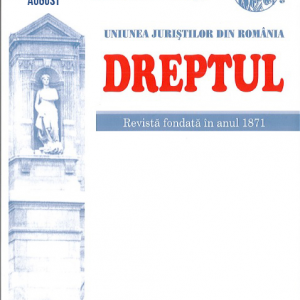 The principle of equality of arms is a jurisprudential principle of the European Court of Human Rights and is an integral part of the right to a fair trial enshrined in the (European) Convention for the Protection of Human Rights and Fundamental Freedoms. Within this article, the author set herself to undertake an analysis of the evolution of this principle, both in terms of jurisprudence and legal point of view.
The principle of equality of arms is a jurisprudential principle of the European Court of Human Rights and is an integral part of the right to a fair trial enshrined in the (European) Convention for the Protection of Human Rights and Fundamental Freedoms. Within this article, the author set herself to undertake an analysis of the evolution of this principle, both in terms of jurisprudence and legal point of view. -
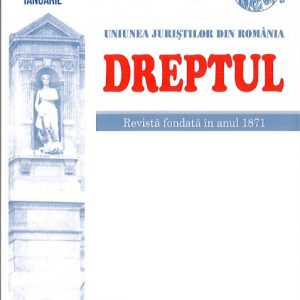 As subject of public international law, the European Union is committed not only to observe, but also to develop the public international law and, within this framework, it is established the principle of equality between the Member States, within the limits of the treaties of the Union. The institutional structure of this intergovernmental international organization and the procedure of adoption of the legal acts reflect a nuanced equality between the Member States, which however emphasizes the specificity of the Union. „United in diversity”, a motto to which, according to the Declaration No 52 to the Treaty of Lisbon, not all Member States have subscribed, the European Union promotes an enhanced integration and a political cooperation in which the States act in accordance with the Treaties and, in certain cases, for the purpose of supporting the national interest. The transfer of competences from the States to the Union was achieved gradually, with the economic and political evolution at national and international level, pursuant to the state sovereignty. Equality between states within the European Union is a principle whose application in the current European and international context might reflect a new approach of the European integration and positioning of the Member States within the Union.
As subject of public international law, the European Union is committed not only to observe, but also to develop the public international law and, within this framework, it is established the principle of equality between the Member States, within the limits of the treaties of the Union. The institutional structure of this intergovernmental international organization and the procedure of adoption of the legal acts reflect a nuanced equality between the Member States, which however emphasizes the specificity of the Union. „United in diversity”, a motto to which, according to the Declaration No 52 to the Treaty of Lisbon, not all Member States have subscribed, the European Union promotes an enhanced integration and a political cooperation in which the States act in accordance with the Treaties and, in certain cases, for the purpose of supporting the national interest. The transfer of competences from the States to the Union was achieved gradually, with the economic and political evolution at national and international level, pursuant to the state sovereignty. Equality between states within the European Union is a principle whose application in the current European and international context might reflect a new approach of the European integration and positioning of the Member States within the Union. -
 The promotion and protection of the rights of the child has always been one of the main objectives of the European Union, but it is also a result of international commitments. All Member States of the European Union have ratified the UN Convention on the Rights of the Child, and the rules and principles of this Convention guide the policies and the actions of the Union that impact on the rights of the child. The Lisbon Treaty has conferred greater importance to the objectives of the European Union, and by Article 3 (3) of the UN Convention on the Rights of the Child it was explicitly established the imperative obligation to promote the protection of the rights of the child. In addition, the rights of the children are enshrined in the Charter of Fundamental Rights of the European Union, which by Article 24 recognizes children as independent and autonomous holders of rights, also considering the best interest of the child as paramount in relations with the public authorities and the private institutions. The transposition of the European and international objectives, as well as of the fundamental principles referring to the protection of the rights of the child took place naturally through the adoption of new national regulations reflecting the acquiescence of Romania to the European objectives and its constant concern for the protection of the rights of the child. However, in many cases there are encountered in practice situations where, although there are both the legal basis and the mechanisms necessary for its implementation, the rights of the children are not respected and/or are not given due importance. This paper aims to draw attention once again to the essential rights of children and to emphasize the fundamental principles referring to the promotion and protection of rights of the children, with particular regard to the principle of the best interest of the child, as regulated at European level.
The promotion and protection of the rights of the child has always been one of the main objectives of the European Union, but it is also a result of international commitments. All Member States of the European Union have ratified the UN Convention on the Rights of the Child, and the rules and principles of this Convention guide the policies and the actions of the Union that impact on the rights of the child. The Lisbon Treaty has conferred greater importance to the objectives of the European Union, and by Article 3 (3) of the UN Convention on the Rights of the Child it was explicitly established the imperative obligation to promote the protection of the rights of the child. In addition, the rights of the children are enshrined in the Charter of Fundamental Rights of the European Union, which by Article 24 recognizes children as independent and autonomous holders of rights, also considering the best interest of the child as paramount in relations with the public authorities and the private institutions. The transposition of the European and international objectives, as well as of the fundamental principles referring to the protection of the rights of the child took place naturally through the adoption of new national regulations reflecting the acquiescence of Romania to the European objectives and its constant concern for the protection of the rights of the child. However, in many cases there are encountered in practice situations where, although there are both the legal basis and the mechanisms necessary for its implementation, the rights of the children are not respected and/or are not given due importance. This paper aims to draw attention once again to the essential rights of children and to emphasize the fundamental principles referring to the promotion and protection of rights of the children, with particular regard to the principle of the best interest of the child, as regulated at European level. -
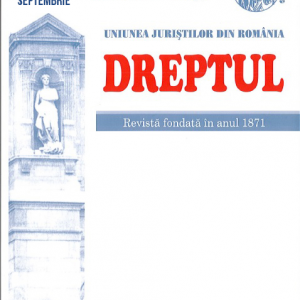 The European Union law principles can be source of Community law, as they have the same rank as the treaties in the hierarchy of the EU law sources. These principles are compulsory both for the EU institutions and the Member States. These binding principles include the principle of legality of indictment and punishment. Therefore, whenever a Community act requires Member States to establish punishments to be used in the event an offense provided for in that act, they must comply with. There are also some exceptions to this rule (the compulsoriness for the European Union Member States): the criminal liability of the person who committed the offense cannot be determined nor can be aggravated by breaching the Community act independently of a domestic law adopted by a Member State in view of its implementation. In this study, the authors analyze the exceptions to the principle of legality of indictment and punishment, which have a particular interest in criminal matters, given the contradictions in the Romanian and foreign criminal doctrine.
The European Union law principles can be source of Community law, as they have the same rank as the treaties in the hierarchy of the EU law sources. These principles are compulsory both for the EU institutions and the Member States. These binding principles include the principle of legality of indictment and punishment. Therefore, whenever a Community act requires Member States to establish punishments to be used in the event an offense provided for in that act, they must comply with. There are also some exceptions to this rule (the compulsoriness for the European Union Member States): the criminal liability of the person who committed the offense cannot be determined nor can be aggravated by breaching the Community act independently of a domestic law adopted by a Member State in view of its implementation. In this study, the authors analyze the exceptions to the principle of legality of indictment and punishment, which have a particular interest in criminal matters, given the contradictions in the Romanian and foreign criminal doctrine. -
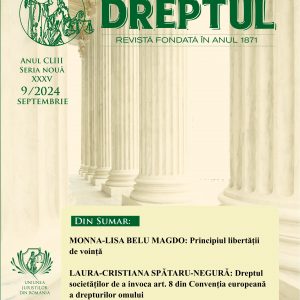
-
 Article 5 of the Civil Procedure Code1 regulates the fundamental principle of free access to justice and the obligations that the legislator establishes as duty of the judge are meant to outline this principle2 . Free access to justice is a fundamental principle of the organization of any democratic judicial system, being enshrined in an important number of international documents, therefore it has special meanings both for procedural law and for the constitutional law3 .
Article 5 of the Civil Procedure Code1 regulates the fundamental principle of free access to justice and the obligations that the legislator establishes as duty of the judge are meant to outline this principle2 . Free access to justice is a fundamental principle of the organization of any democratic judicial system, being enshrined in an important number of international documents, therefore it has special meanings both for procedural law and for the constitutional law3 . -
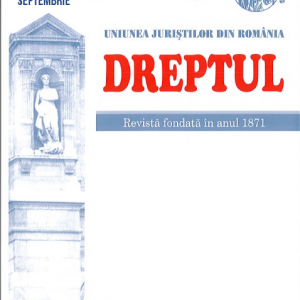 In this article, the author aims to analyze the theoretical foundations of two essential principles for the state of law and how to balance the relations between the three powers: the principle of constitutional loyalty and the principle of loyal institutional collaboration between the public authorities vested with the governing powers. The two principles are not formally provided in the text of the Constitution, but can be deduced by way of interpretation from other constitutional principles. As for the first principle, the author shows that it has its source in the obligation freely assumed by each member of a community of individuals organized according to the principles of social hierarchy, or imposed by the public authority with supreme force in the community, to respect a summum of legal norms, whose purpose consists in the regulation and harmonization of the social relations. The origin of the second principle is found in the principle of separation of the three powers in the state, which in the governing process are obliged to collaborate loyally with each other, within the institutional framework prescribed by the constitutional norm. In the end, the author concludes that the substance of the principle of constitutional loyalty includes not only the general obligation of citizens and of both public authorities and institutions to respect the will of the Constituent Legislator formally expressed in the text of the Constitution, but also the obligation of the STATE and of each public authority provided in the Constitution, to be loyal to the CITIZEN. Otherwise, the relations between the state and the citizen are compromised, or will take the form and content of totalitarian-type relations, in which the individual is deprived of rights and absorbed by the state as a dehumanized form of life. The author considers that the loyalty of the state towards the citizen is an obligation of constitutional rank and, on this basis, he proposes, de lege ferenda, its express inclusion in the text of the Constitution at a future revision thereof.
In this article, the author aims to analyze the theoretical foundations of two essential principles for the state of law and how to balance the relations between the three powers: the principle of constitutional loyalty and the principle of loyal institutional collaboration between the public authorities vested with the governing powers. The two principles are not formally provided in the text of the Constitution, but can be deduced by way of interpretation from other constitutional principles. As for the first principle, the author shows that it has its source in the obligation freely assumed by each member of a community of individuals organized according to the principles of social hierarchy, or imposed by the public authority with supreme force in the community, to respect a summum of legal norms, whose purpose consists in the regulation and harmonization of the social relations. The origin of the second principle is found in the principle of separation of the three powers in the state, which in the governing process are obliged to collaborate loyally with each other, within the institutional framework prescribed by the constitutional norm. In the end, the author concludes that the substance of the principle of constitutional loyalty includes not only the general obligation of citizens and of both public authorities and institutions to respect the will of the Constituent Legislator formally expressed in the text of the Constitution, but also the obligation of the STATE and of each public authority provided in the Constitution, to be loyal to the CITIZEN. Otherwise, the relations between the state and the citizen are compromised, or will take the form and content of totalitarian-type relations, in which the individual is deprived of rights and absorbed by the state as a dehumanized form of life. The author considers that the loyalty of the state towards the citizen is an obligation of constitutional rank and, on this basis, he proposes, de lege ferenda, its express inclusion in the text of the Constitution at a future revision thereof. -
 This doctoral research investigates the case law development of the principle of loyalty within the framework of the invisible constitution theory. Uncodified counterpart of written constitutional rules, the invisible constitution belongs to a broader understanding of the concept, specifically the constitution in its material sense. Contemporary examples are found within the British constitutional order (e.g. constitutional conventions and case law), the French bloc de constitutionnalité (i.e. complementary unwritten rules) and the case law of the Hungarian Constitutional Court (i.e. the Sólyom model). Assuming a national invisible constitution exists, the paper aims to demonstrate that the principle of loyal cooperation belongs to such an invisible dimension of the Romanian constitutional order.
This doctoral research investigates the case law development of the principle of loyalty within the framework of the invisible constitution theory. Uncodified counterpart of written constitutional rules, the invisible constitution belongs to a broader understanding of the concept, specifically the constitution in its material sense. Contemporary examples are found within the British constitutional order (e.g. constitutional conventions and case law), the French bloc de constitutionnalité (i.e. complementary unwritten rules) and the case law of the Hungarian Constitutional Court (i.e. the Sólyom model). Assuming a national invisible constitution exists, the paper aims to demonstrate that the principle of loyal cooperation belongs to such an invisible dimension of the Romanian constitutional order.
